Art transforms cities, yet few events achieve this as profoundly as The Public Art Abu Dhabi Biennial. As urban landscapes evolve, public spaces become more than functional—they turn into cultural narratives. Consequently, this Biennial challenges the notion of where art belongs and who it serves. Through its installations, the cityscape itself becomes a gallery, seamlessly blending history and modernity. Ultimately, this event positions Abu Dhabi at the forefront of global contemporary art.
The Public Art Abu Dhabi Biennial, launched in November 2024, has reshaped the emirate’s urban landscape. Running until April 30, 2025, this ambitious program turns the city into an open-air gallery. It redefines public spaces through installations, performances, and artistic interventions.
A UNIQUE ARTISTIC LANDSCAPE
This year’s theme, “Public Matter,” challenges conventional notions of space and community engagement. More than 70 artists from diverse backgrounds contribute to this evolving dialogue. Their works span across eight thematic routes, embedding contemporary art within daily life.
At Abu Dhabi Corniche, Farah Al Qasimi’s “Homesickness” installation resonates deeply. It features oyster sculptures emitting oceanic soundscapes, evoking nostalgia and cultural memory.
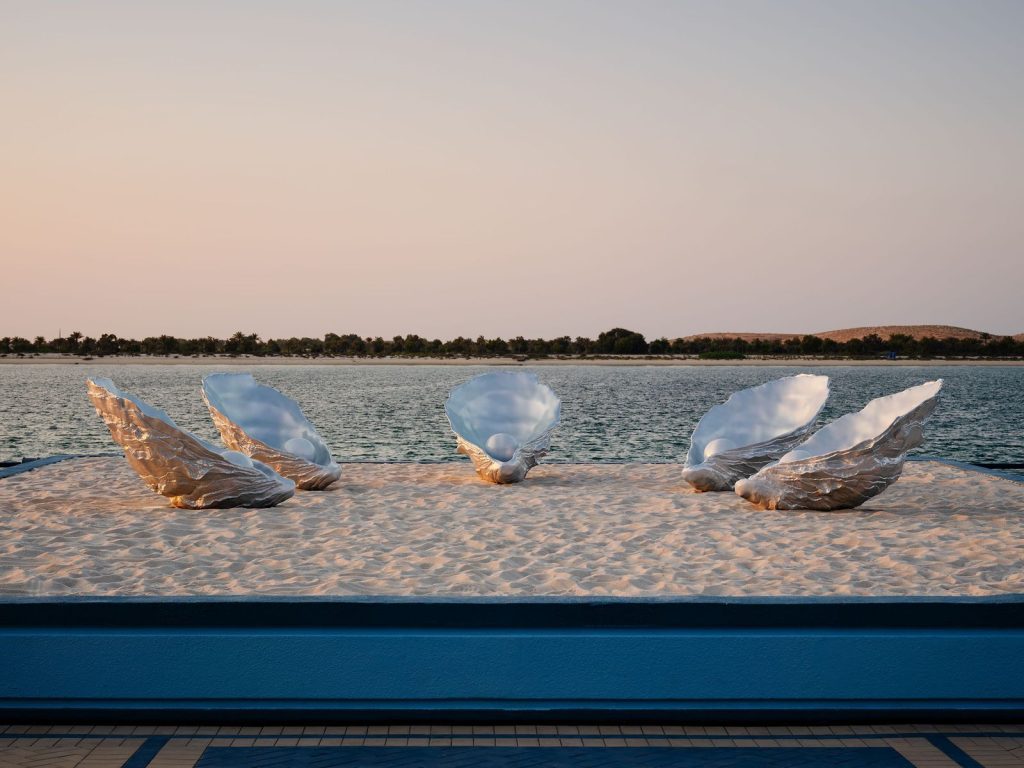
Meanwhile, at Lake Park, Seema Nusrat’s “Floating Fragments” visualizes a submerged house. It critiques climate change and its potential devastation of urban environments.
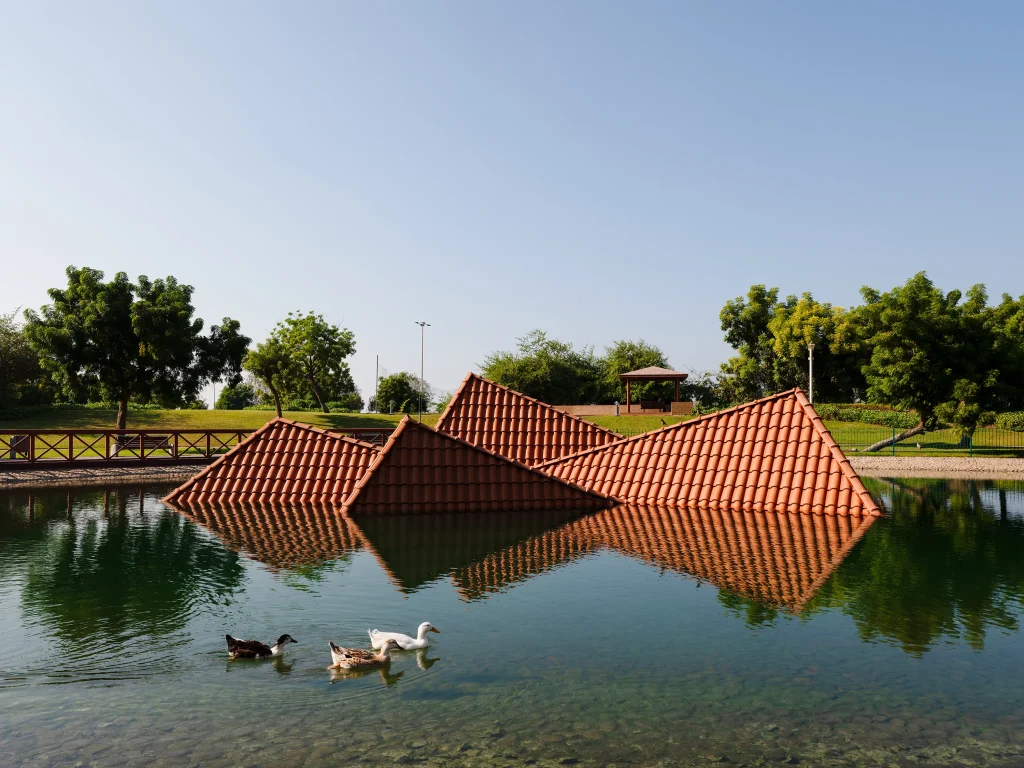
LARGE-SCALE PUBLIC ENGAGEMENT
Public art here is not static; it demands interaction and engagement. Oscar Murillo’s “A 1% Offering: Collective Messages to Our Ancestors” stretches across 1% of the Corniche. Inspired by Monet’s “Water Lilies,” the piece merges artistic tradition with contemporary reflections.
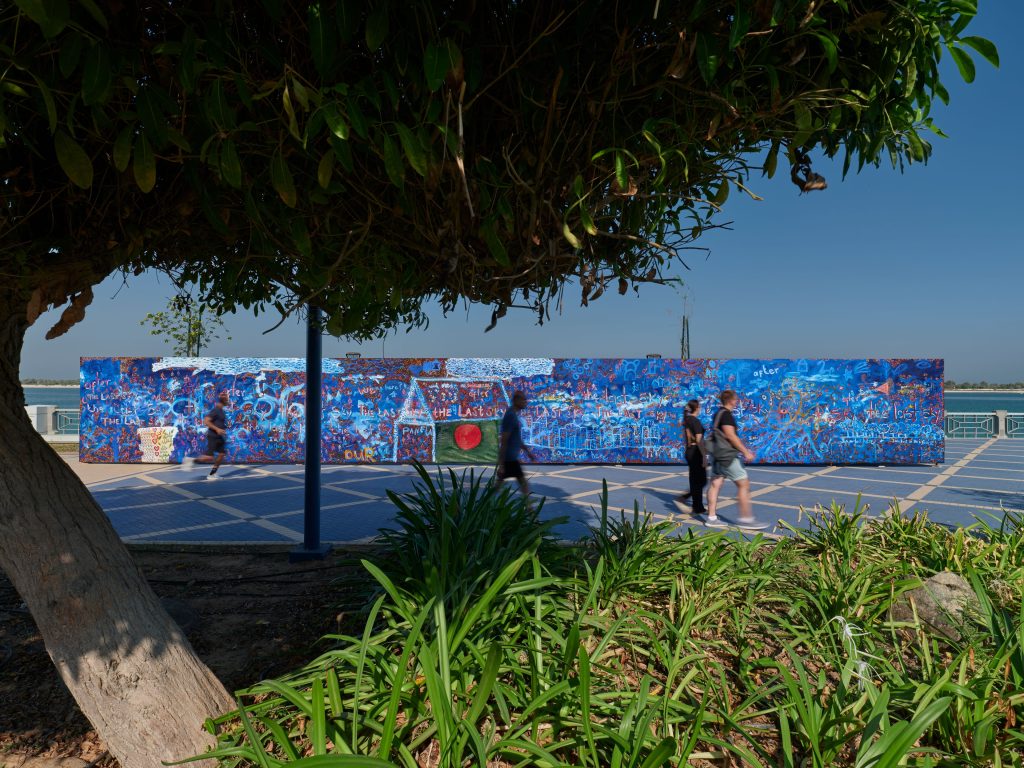
Christopher Joshua Benton transforms the Carpet Souk with “Where Lies My Carpet Is Thy Home.” A massive digital-analog hybrid carpet invites visitors to walk, sit, and reflect. It merges Afghan war carpet aesthetics with 8-bit pixel imagery, offering a layered visual experience.
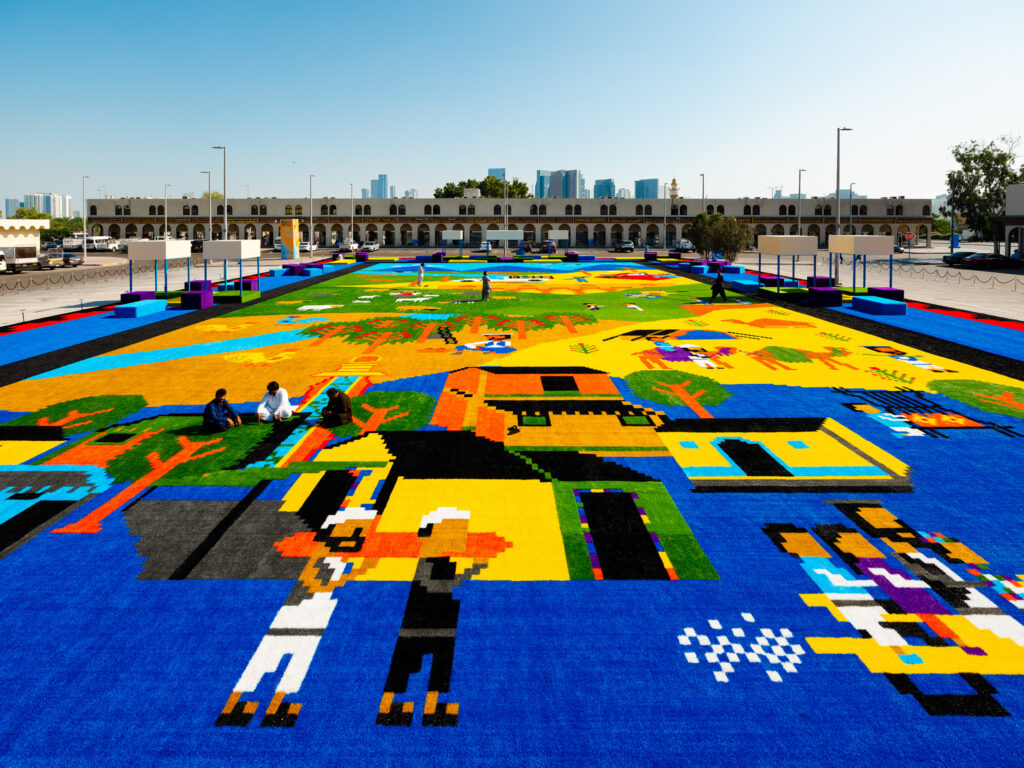
INTERACTIVE INSTALLATIONS AND COMMUNITY PARTICIPATION
Unlike traditional museum experiences, many installations encourage direct participation. Paweł Althamer’s “Tentarium” in Lake Park serves as an interactive community hub. The cat-shaped tent invites visitors, particularly children, to contribute their own paintings. It embodies art’s ability to create collective experiences.
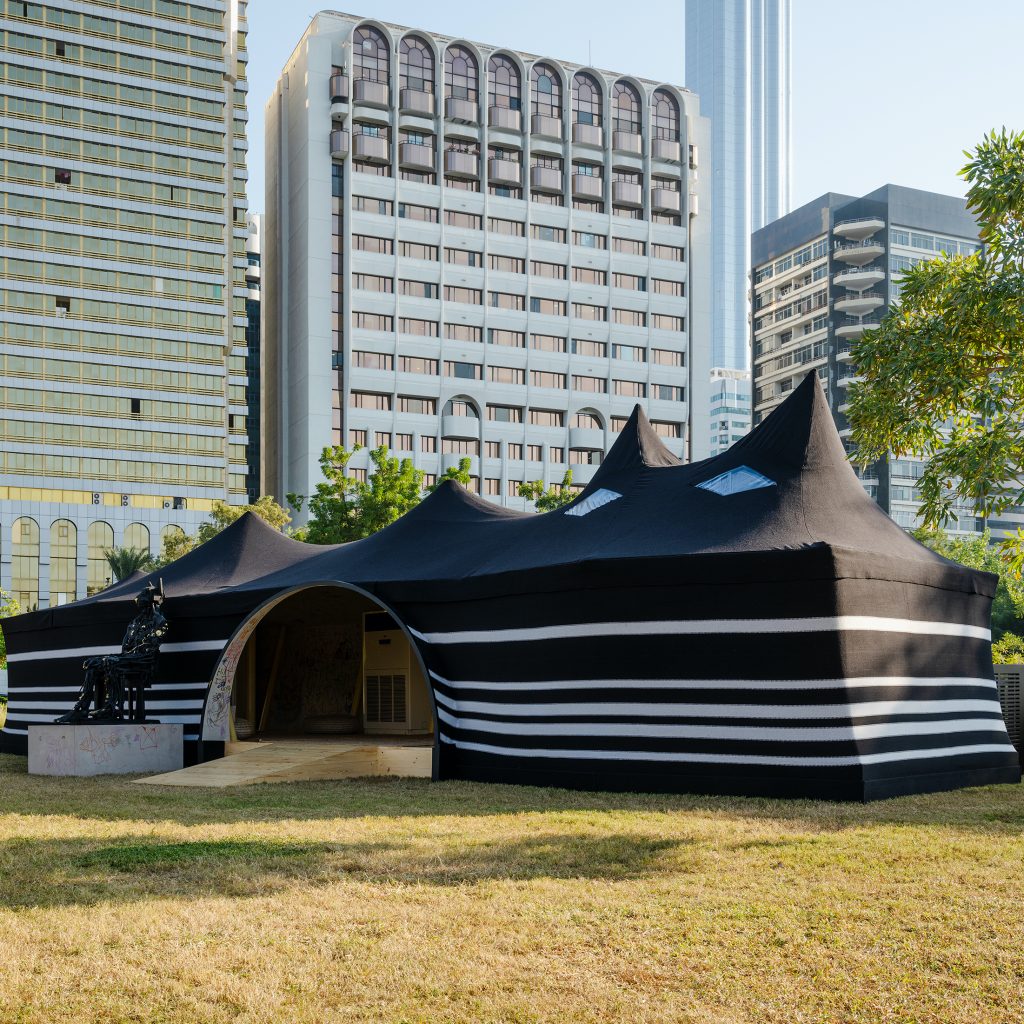
Other installations disrupt passive viewing by incorporating sound, movement, and human interaction. In the Cultural Foundation, Wael Al Awar’s “Barzakh” reimagines sustainable materials in architecture. The recycled-material pavilion questions how future structures can integrate ecological responsibility.
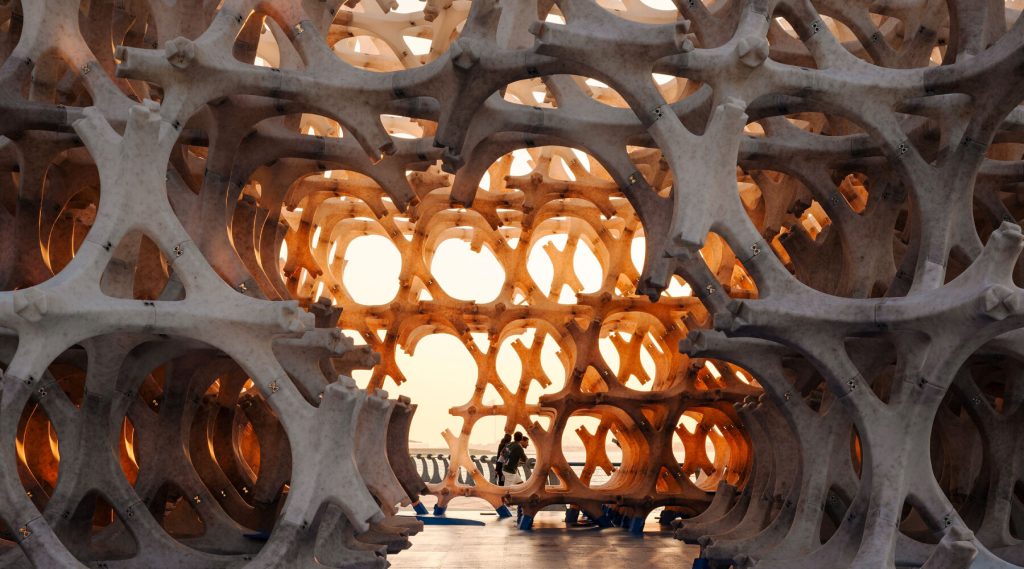
ABU DHABI’S CULTURAL AMBITION
This Biennial is part of Abu Dhabi’s broader cultural strategy. The city is rapidly establishing itself as a global art hub. With landmarks like the Louvre Abu Dhabi and the upcoming Guggenheim Abu Dhabi, this effort is undeniable.
Beyond institutional projects, public art initiatives reshape urban dynamics. They foster accessibility, allowing art to become part of everyday life. Artworks no longer exist solely within galleries; they inhabit and redefine streets, parks, and waterfronts.
A NEW ERA OF URBAN ART
The Biennial’s impact extends beyond temporary exhibitions. It sets a precedent for the integration of art within urban planning. By situating art in non-traditional spaces, the initiative influences future cultural policies. This forward-thinking approach ensures that public spaces continue to evolve, embracing artistic interventions that resonate with diverse audiences.
Public engagement is not an afterthought—it is central to the Biennial’s philosophy. Guided tours, workshops, and discussions create opportunities for deeper engagement. These activities allow participants to immerse themselves in artistic expressions, fostering a greater appreciation for public art’s role in shaping urban identity. Moreover, they encourage conversations that bridge different perspectives, fostering a richer cultural dialogue.
The transformation of Abu Dhabi’s public spaces through this Biennial is not merely aesthetic. It is a statement about the city’s ambition to become a leader in the global art world. By integrating public art into daily life, the city embraces a vision where art serves as a unifying force, connecting communities and reflecting shared histories. Whether through monumental sculptures, interactive performances, or thought-provoking installations, this Biennial ensures that public art remains at the heart of Abu Dhabi’s urban fabric.
THE FUTURE OF PUBLIC ART IN ABU DHABI
As the Biennial continues until April 30, 2025, its influence will only grow. The initiative signals a shift in how Abu Dhabi envisions cultural spaces. It prioritizes inclusivity, pushing art beyond institutional walls.
Visitors experience art not as passive observers but as active participants. The city itself becomes a living museum, constantly evolving. This Biennial is not merely an exhibition—it is a cultural movement. Through it, Abu Dhabi asserts itself as a leader in contemporary public art.


 then "Add to Home Screen"
then "Add to Home Screen"